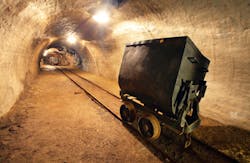Report calls for better emergency equipment in US mines
U.S. mining companies and regulators should take measures to improve safety conditions and to provide more opportunities for miners to escape from underground emergency situations, according to a new report released by the independent, nonprofit National Research Council.
The report stressed the importance of ensuring that mines are supplied with more backup air supplies and improved breathing devices that would increase miners' chances of surviving incidents at work. The report also called for the Mine Safety and Health Administration (MSHA) and the National Institute for Occupational Safety and Health (NIOSH) to utilize more advanced technology to improve safety, such as systems for communicating with people on the surface, fail-safe tracking devices and real-time gas monitors.
However, Bruce Watzman of the National Mining Association commented that introducing new technology to mines could be hampered by bureaucracy and urged the MSHA and NIOSH to review their approach to approving new technology to encourage innovation, as such devices have been in use for months in other countries, like Australia and South Africa.
The National Research Council, which is run by the National Academy of Sciences, did not propose any new legislation or regulation but concentrated on possible ways to improve equipment in mines to ensure better protection for the country's 50,000 miners. The report was written by a committee of experts with universities, NASA and the United Mine Workers of America among others, the Washington Post noted.
RELATED: Mining companies seek permission to extract uranium from Navajo territories
Authors stated that despite the fact that very few miners would ever have to evacuate, there is a need for extensive training to the point that, in a real case of emergency, the required steps to safety would be deeply ingrained into staff. The report noted that confusion and hesitation can aggravate the situation and should be avoided when possible.
The National Research Council released the report partly as a response to a series of mine disasters in West Virginia. In one of the most deadly incidents, 12 miners were killed in 2006 when they were trapped at International Coal Group's Sago Mine because of an explosion. Randal McCloy, the only survivor, said that during the 40 hours he spent waiting for rescue he witnessed the failure of several air packs that miners had been carrying.
In 2012 the MSHA told mine operators to start gradually replacing that model of "self-contained self-rescuer," since it proved unreliable in tests. Under MHSA orders, all of the 66,000 potentially defective air packs have to be out of use by the end of 2013 and the main manufacturer, CSE Corp. of Monroeville, Pa., no longer produces that model. Many of them are still stored in emergency caches under a federal law passed after the tragedy in Sago.
At least two hours of emergency air should be supplied per miner and more air packs should be stored in escapeways, under federal law. Another safety regulation states that miners should not walk more than half an hour to reach an air pack and others should be available at regular intervals all the way to the surface.
